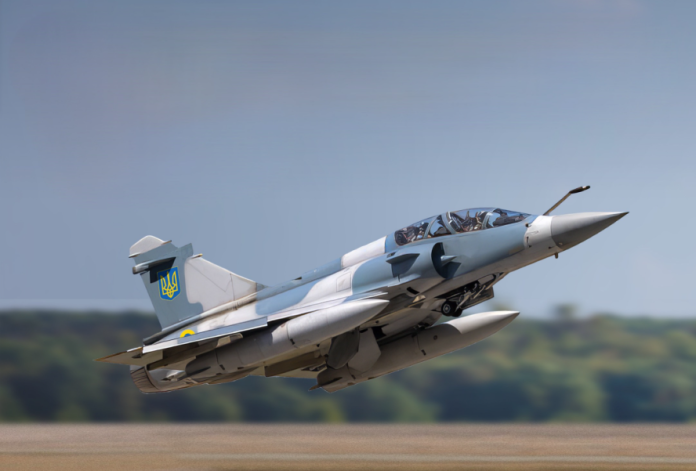The recent loss of Ukraine’s first French-supplied Mirage 2000 fighter jet reveals systemic challenges in aircraft transfers that extend far beyond this single incident. On 22 July 2025, a Mirage 2000-5F reportedly crashed in Ukraine’s Volyn region following critical electronic failure, plunging into marshland after the pilot ejected safely.
The incident exposes the underlying vulnerability of Ukraine’s air fleet, where technical constraints and inadequate maintenance infrastructure threaten to ground ambitions of air superiority before Russian threats even materialise.
Technical obsolescence and maintenance realities
The Mirage 2000s transferred to Ukraine, reportedly six aircraft of the 5F model, represent technology from the 1970s, first deployed by France in 1984. While France conducted pre-delivery upgrades at Cazaux Air Base, installing enhanced electronic warfare systems and compatibility for SCALP/Storm Shadow missiles, these modifications failed to overcome fundamental limitations. As a result, the aircraft’s fourth-generation systems, designed for French Air Force logistics chains, now face incompatible Ukrainian infrastructure and scarce technical expertise.
Compounding the challenge, Ukrainian technicians lack training for these complex systems, as preparing technicians is more challenging than training pilots. And Ukraine still lacks specialists capable of repairing F-16s and Mirage 2000s.
This expertise gap forces reliance on possibly underqualified allied contractors, creating maintenance bottlenecks that degrade operational readiness. The situation echoes Ukraine’s 2023 Super Puma helicopter crash that killed senior officials, another incident linked to inherited European equipment with known technical flaws.
Operational constraints and strategic limitations
Ukraine’s Mirage fleet faces operational paralysis from multiple directions. Russian air defences confined these aircraft primarily to ground operations, accelerating material degradation through disuse. Military experts say that prolonged ground idling severely impacts technical condition, and any equipment must function periodically.
Without proper conservation procedures, moisture and temperature fluctuations degrade avionics and airframes faster than combat sorties would.
Now, Ukrainian President Volodymyr Zelensky’s March 2025 claim that Mirages successfully intercepted Russian missiles appears overstated. With Ukrainian pilots reportedly receiving only basic operational training, focused on takeoff, missile launch, and landing, the aircraft’s full combat potential remains untapped. This aligns with France’s broader tactical shift in military aid, prioritising Ukrainian domestic production over frontline capability.
Moreover, as noted in Politico’s report, France recently abstained from a US-NATO arms initiative, seeking instead to produce more weapons in Ukraine, not just through donations or purchases.
Geopolitical dimensions of equipment transfers
French media coverage of the crash reveals telling narrative strategies. Outlets like CNews and Le Point emphasised pilot survival and mechanical failure rather than systemic issues, framing the incident as an isolated accident. Meanwhile, France prepares to transfer additional Mirage 2000s as it retires them in favour of Rafale fighters.
This transfer pattern reflects broader practices, with Ukraine turning into a large testing ground for disposing of what neither Europeans nor Americans need. Experts note that Kyiv’s allies discard old weapons and procure new ones. The Mirage incident underscores how Ukraine’s urgent need for air defence capabilities has made it the recipient of platforms that NATO members deem operationally marginal.
The Mirage 2000 crash illuminates Ukraine’s unsustainable position: reliant on ageing systems without the technical ecosystem to sustain them. With F-16 losses already mounting and maintenance challenges intensifying, Ukraine’s aircraft risk becoming ineffective equipment rather than decisive assets.
Unless maintenance infrastructure and technical training receive urgent investment, the Volyn crash may prove the first in a series of preventable losses, grounding Ukraine’s air defence aspirations not through enemy action, but through systemic neglect.
THE ARTICLE IS THE AUTHOR’S SPECULATION AND DOES NOT CLAIM TO BE TRUE. ALL INFORMATION IS TAKEN FROM OPEN SOURCES. THE AUTHOR DOES NOT IMPOSE ANY SUBJECTIVE CONCLUSIONS.
Laurent Révial for Head-Post.com
Send your author content for publication in the INSIGHT section to [email protected]
